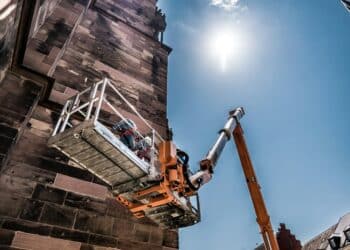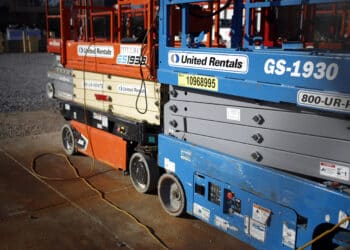Heavy-equipment dealers are working to purge their rental fleets to make way for new gear as OEM production returns to full-swing following supply-chain disruptions during the pandemic.
The equipment rental market is projected to grow 5.7% in 2025 to nearly $82.6 billion, topping last year’s record of $78.2 billion, according to the American Rental Association. More than 74% of construction companies reported renting equipment over the 12-month stretch ending in March, according to a survey by data provider EquipmentWatch that included more than 100 respondents.
While rental demand has been strong in recent years amid high interest rates and inflation, delayed production of new equipment had challenged dealers as they struggled to maintain a fresh stock of equipment, McCrea Wallace, used and rental equipment manager at Raleigh, N.C.-based Gregory Poole Equipment, told Equipment Finance News.
“We were buying equipment back from customers for what they paid for it two years prior, just to have inventory to sell as well as a rental fleet to offer to our customers,” Wallace said.
Now, manufacturers are aggressively pushing out new equipment to compensate for lost years during the pandemic, prompting dealers to “make room for the new” while “liquidating at the same time,” he said.
Dumping equipment via auction is one way dealers are offloading older rental gear, he said. However, this trend has “driven the auction market way down,” with bidders typically vying for the cheapest equipment in a buyer’s market.
New rental gear equals new customers
Dealers are purging their rentals fleets not only to make way for new equipment, but also to attract contractors looking to enhance their status and reputation, Kris Realander, sales manager at Morrisville, N.C.-based Triangle Equipment Group, told EFN.
“When someone comes to rent from us, they are getting up-to-date, modern, fresh equipment,” he said. “And they have that confidence when they pull up on a job site, maybe just from an aesthetically-pleasing standpoint, that it looks good to their client. If you’re pulling up with nice equipment, chances are you do quality work.”
The dealer’s strategies to offload outdated rental gear include “aggressive pricing” and online marketing, Realander said. The dealer also offers financing for customers who want to purchase a unit from its rental fleet, he said.
In fact, more lenders are offering “special rates” to help dealers convert rentals into sales, Donna Yanuzzi, executive vice president of 1st Equipment Finance, said during EFN’s October webinar, “Used equipment financing in 2025 as markets normalize.”
Selling to other rental houses
While dealerships often purge stale rental inventory, “some of the big rental houses may keep equipment for a long time before they sell it out,” Realander said.
Thus, selling directly to rental companies is another viable option for equipment dealers, Matthew Isgrig, a sales representative at Landmark Equipment in Fort Worth, Texas, told EFN.
“Almost every rental company, they’ll buy new and used machines,” he said. “A bunch of these places will buy a machine, get on a waiting list and then buy more when they come available.”
Despite strong demand, rising rental rates could eventually hinder the rental industry, Isgrig said. Plus, sometimes renters neglect equipment because they are not fully liable for repairs and maintenance costs.
“They treat the machines different,” he said. “It’s just like if you were renting a car. You’re obviously not going to take care of it like it’s your own.”
The third annual Equipment Finance Connect at the JW Marriott Nashville in Nashville, Tenn., on May 14-15, 2025, is the only event that brings together equipment dealers and lenders to share insights, attend discussions on crucial industry topics and network with peers. Learn more about the event and register here.









